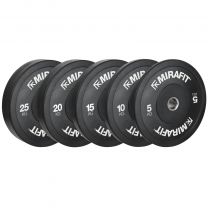Kegel Exercises for a Stronger Pelvic Floor
Kegel Exercises for a Stronger Pelvic Floor

The pelvic floor is a subject that many of us have shied away from for years. But it’s time to speak up because we’ve all got one. In fact, if you workout regularly the health of your pelvic floor can have a huge impact on your training, you just don’t know it. Passing urine during any form of exercise (such as heavy barbell lifts, or while running) is a sign that your pelvic floor isn’t functioning as it should.
What Are Kegels?

Kegels are an exercise that strengthen the pelvic floor muscles. You can think of the pelvic floor as a hammock shaped muscle at the bottom of the torso that keeps the organs in place. Without a pelvic floor, internal organs such as the bladder and uterus would sag, this is known as a prolapse.
Both men and women have a pelvic floor that runs from the tail bone to the pubic bone. The pelvic floor, like any other muscles, contracts and relaxes and so it needs to be trained. Too loose and you risk prolapse, too tight and the muscles won’t work properly.
Who Should Be Doing Kegel Exercises?

There’s a common misconception that Kegel exercises should be reserved for pre and postnatal women. However, that isn’t the case. Although sometimes important during pregnancy, Kegel exercises are suitable for anyone who wants to keep their pelvic floor strong, regardless of their sex. In particular, people who suffer with incontinence may need to work on improving their pelvic floor.
That being said, they aren’t for everyone. If you already have an overactive pelvic floor, then performing Kegels could have a negative effect. If you are unsure whether you have an over or underactive pelvic floor you should contact a medical professional such as a Pelvic Health Physiotherapist.
Why is a Strong Pelvic Floor Important?
Having a strong pelvic floor has a multitude of benefits, some of them include preventing the passing of urine, stools or gas involuntarily and reducing the chance of a prolapse.
How to Do Kegel Exercises

First things first, you need to locate your pelvic floor muscles. A top tip for finding them is to stop urine mid flow. If you can do this, then you’ve found your pelvic floor muscles.
• Begin either seated, lying on your back or on all fours in a table top position. You can test out all three positions to see which is the most effective for you.
• Next, try to relax all of the muscles in your body, in particular your abdominals, glutes and inner thighs. You’re prone to squeezing these muscles instead of your pelvic floor.
• Breathe in, then as you breathe out, squeeze from back to front as if pulling a zip from the coccyx to the pubic bone.
• Squeeze for three seconds and relax for three seconds.
To progress, begin with three seconds and work your way up to ten seconds. You can complete up to three sets and ten repetitions. Completing this number of sets and reps should be enough to maintain a strong pelvic floor. As mentioned above, the key is to not push too hard, so the pelvic floor becomes overly tight.
It might be hard to judge if your pelvic floor is getting stronger. Unlike your biceps, you won't see it grow. But, having a strong pelvic floor can improve your performance in the gym. Many women suffer from stress incontinence when training in movements such as squats, jumps and high intensity exercise. If you notice this occurs less or not at all then it’s a sign your pelvic muscles are getting stronger and you can perform better.
Written by guest author Eryn Barber.
For more content, follow us on Instagram, YouTube, TikTok, and on our official Mirafit Facebook page.
Enter your email to signup to our newsletter
Tags: Misc > Lifestyle







